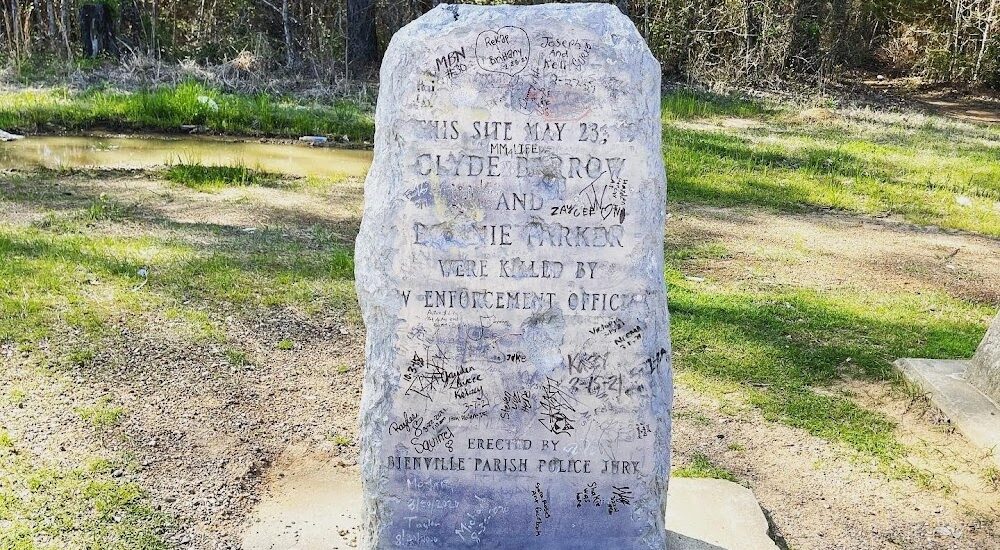Welcome to the Bonnie & Clyde Monument in Gibsland, Louisiana, a pivotal site in the saga of America’s most notorious outlaw couple, Bonnie Parker and Clyde Barrow. On May 23, 1934, this location became infamous as the site where Bonnie and Clyde met their end, ambushed by law enforcement officers determined to stop their crime spree across the Central United States.
The story of Bonnie and Clyde is a compelling tale of love, crime, and the relentless pursuit by the law. Bonnie Parker, born in 1910 in Rowena, Texas, was a bright student with dreams of becoming an actress. Clyde Barrow, born in 1909 in Ellis County, Texas, grew up in a poor farming family. Both became outlaws during the Great Depression, a time when economic hardship drove many to desperate measures.
Their criminal career, spanning 1932 to 1934, included numerous bank robberies, kidnappings, and murders. The duo was particularly known for robbing small-town stores and rural gas stations, drawing national attention from the press during an era known as the ‘public enemy era’. Their notoriety was such that it inspired films and books, most famously the 1967 film ‘Bonnie and Clyde’ starring Warren Beatty and Faye Dunaway.
The monument here in Gibsland stands as a solemn reminder of their final moments. On that fateful day in 1934, law enforcement officers, led by Texas Ranger Frank Hamer, lay in wait along a rural road. They opened fire on Bonnie and Clyde’s car, ending their lives and their reign as outlaws.
Today, visitors can reflect on this dramatic history while surrounded by the peaceful Louisiana landscape. Informative plaques around the monument provide deeper insights into the lives and crimes of Bonnie and Clyde, allowing you to step back in time to understand their complex legacy. The nearby Bonnie & Clyde Museum offers additional artifacts and stories for those interested in learning more about this infamous duo.
As you stand here, take a moment to consider the broader historical context of their story—a time of economic struggle, where outlaws captured the public’s imagination, and lawmen became legends in their own right.






